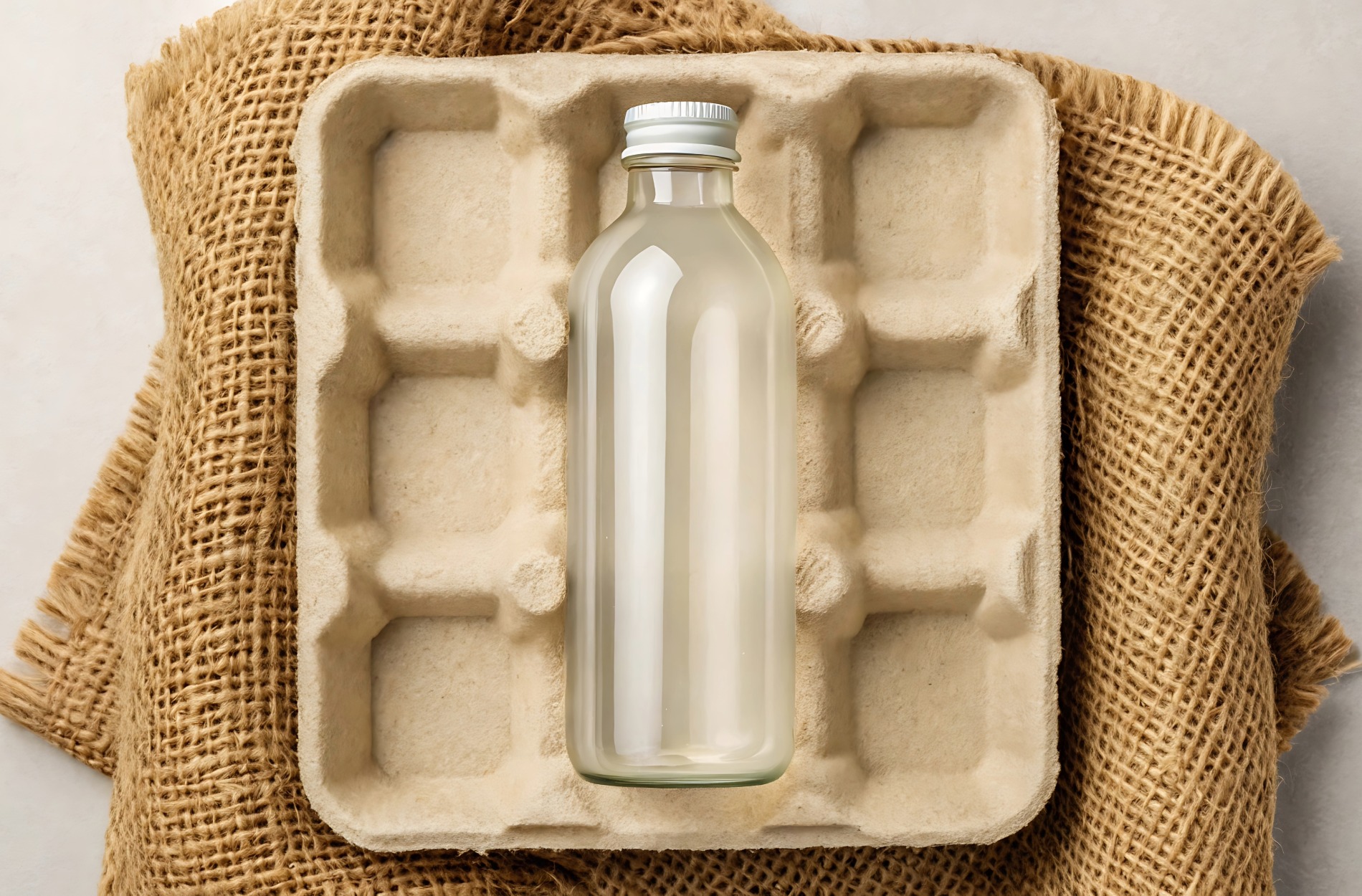Molded pulp packaging plays a big role in protecting products during shipping and storage. It’s used often because it’s lightweight, sturdy, and more environmentally friendly than plastic. But to make sure it’s actually holding up and doing its job, it needs routine checks. If the packaging isn’t working right, it can lead to damages that may cost a lot more than just replacing a few boxes.
Whether you’re using molded pulp trays, inserts, or custom designs, it’s smart to test the packaging regularly. Catching problems early can help avoid shipment losses and keep your products looking good when they arrive. Here’s a step-by-step look at how to check if your molded pulp packaging is performing the way it should.
Visual Inspection
The first step to checking molded pulp packaging is simple: take a close look. A good visual inspection can help catch early signs of damage or poor production quality before the packaging is even used.
Start by pulling a few random samples from your stock. Lay them out on a flat surface and check for the following:
– Cracks, holes, or splits along the edges or corners
– Uneven surfaces or areas that look too thin or flimsy
– Noticeable dents that may have come from drops or rough handling
– Warping that makes the piece no longer sit flat or fit correctly
– Discoloration or patches, which could point to moisture damage or poor material quality
Make sure the pieces are uniform in shape and size. Molded pulp should have a consistent look since it’s made using a mold. If some pieces have different shapes or surface textures, the molding process or materials may need to be looked at. This is especially important when your packaging needs to hold delicate or breakable items.
Checking these visual cues doesn’t take long, but skipping this step could lead to surprises later during transit. For example, if just one tray has a split that goes unnoticed, it could fail during shipping, putting the entire product at risk.
Once you’ve done a full visual sweep, you’ll have a much better sense of whether your molded pulp packaging is ready to move forward or if it needs a little more work to meet your standards. It’s not just about looks. It’s about making sure your product arrives safe and sound, every time.
Strength And Durability Tests
Even if your molded pulp packaging looks perfect on the outside, it still needs to be strong enough to handle real-world use. That means testing how it performs under pressure, impact, and everyday handling. You’re not trying to destroy it, just making sure it can do its job.
Here are a few easy ways to check strength and durability:
1. Compression Test: Stack a few of your packages on top of one another and see how the bottom layer holds up. This helps show if the pulp can handle the weight without getting crushed during storage or shipping.
2. Drop Test: Take the packaging and drop it from mid-height onto a hard surface. Try it from a few angles. You want to see how it reacts to sudden impacts, like what it might go through in a delivery truck or warehouse.
3. Flex Test: Try gently bending parts of the packaging to test its flexibility. If it cracks or tears too easily, the pulp mix might be too dry or not made for the product’s weight.
4. Edge Crush Test: A hand squeeze test along the edges can give a quick sense of strength. If it caves in too easily, it may not survive the shipping process, especially in bulk or palletized shipments.
5. Time-Wear Test: Stack packaged products as they’d normally be stored and leave them for several days. When you return, check if the packaging held shape, kept its items secure, and didn’t lose strength.
This kind of testing doesn’t require fancy equipment. What it does require is time, a watchful eye, and a clear idea of what good performance looks like for your products. If your molded pulp packaging doesn’t pass these basic checks, adjustments should be made before the next shipment leaves your facility. Reliable packaging isn’t just about materials. It’s about confidence in every package you send out.
Moisture And Resistance Testing
Molded pulp is made from fiber and water, so it’s no surprise that moisture can be one of its weak spots. If your packaging will be exposed to humidity, cold storage, or even just a damp warehouse, you need to know how it reacts when wet. A quick resistance test helps make sure your packaging can keep doing its job even when conditions aren’t perfect.
Here’s how to check:
– Sprinkle or lightly mist water over a test piece, focusing on the base or weakest-looking areas
– Let it sit for a set period of time, maybe an hour or two, and check for soft spots or breakdown
– Give it a gentle squeeze after drying to see if it kept its shape
– Check color changes, texture shifts, or any areas that break apart more easily than others
You can also simulate condensation by sealing the piece in a plastic bag with a damp paper towel and leaving it overnight. This test shows how it handles a slow, moist environment, which is common in refrigerated or long-haul shipping.
If the molded pulp breaks down too easily, that’s a red flag. It means over time, especially in rain or humidity, your product could end up at risk. This is no different than buying outdoor gear that can’t hold up to a little rain. If the job demands some water protection, your packaging shouldn’t fold the second it gets damp.
For Rochester businesses dealing with fall shipping schedules leading into wet and cold weather, now’s a smart time to do this test. You never want to find out from a customer that their delivery showed up soggy.
Fit And Performance Evaluation
Now that you’ve checked strength and moisture resistance, it’s time to make sure the molded pulp actually works with your product. Packaging isn’t just a container. It’s part of the delivery. It has to fit right, protect from damage, and stay secure during loading, transit, and unpacking.
To test fit and performance, focus on:
– How well it grips or cradles your product, especially on all sides
– Whether there’s too much looseness or tightness in any dimension
– How it performs when moved around, shaken slightly, or placed in shipping boxes
– Whether the product stays protected during these light movements
Here’s a quick example. A company shipping handcrafted glass parts used molded pulp inserts customized to fit the item’s shape. If the mold was made too shallow or the material shrank during production, the sharp edges of the product would be exposed, leading to chips or breaks when stacked. By doing a test like this ahead of time, they were able to retool the shape and avoid future breakage.
Even more important, check how the packaging performs under load. If the molded pulp insert starts to slump or curve after a few hours with weight on it, that’s not a good sign for longer hauls or pallet stacking.
If the packaging is being used across multiple product sizes or styles, test them separately. A one-size-fits-all approach often leads to one of them not being protected well enough.
Getting this step right helps you spot problems before they show up on packed trailers or customer loading docks.
Does Your Packaging Still Do Its Job?
Testing molded pulp packaging isn’t just a box you check one time. It’s something worth reviewing regularly, especially when seasons change or product lines update. A batch that performed well in dry summer conditions may react differently in damp fall weather common in Rochester. Moisture, temperature shifts, and time in transit all play a role in how molded pulp holds up.
Too often, poor packaging gets noticed only after something goes wrong — a broken product, an unhappy end-user, or a safety issue in storage. Running checks for wear, moisture, fit, and build helps stop these risks before they cause bigger problems. Whether it’s daily shipping or products that sit stored for long periods, your packaging needs to work every time, on time.
Walking through these testing steps takes effort upfront, but it saves time, products, and possibly reputations later. Preventing damage is always easier than fixing it, especially when that damage starts long before the customer even opens the box. When molded pulp works like it should, you don’t even think about it because nothing gets in the way of the product doing its job. That’s when you know it’s been tested right.
Choosing the right packaging protects more than just the product—it reinforces your reputation. If you want dependable results from every shipment, take a closer look at how molded pulp solutions from Orcon Industries can support your shipping strategy. When every piece is tested, fitted, and ready, your packaging performs just like it should.




